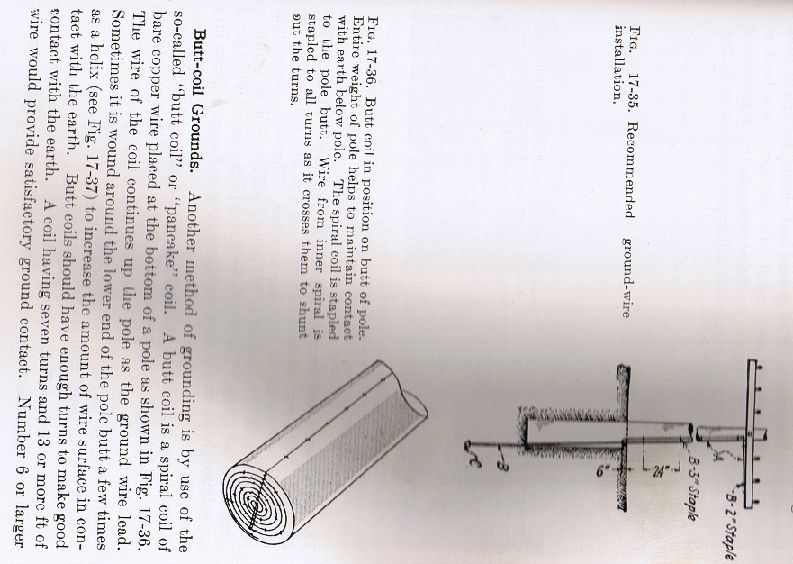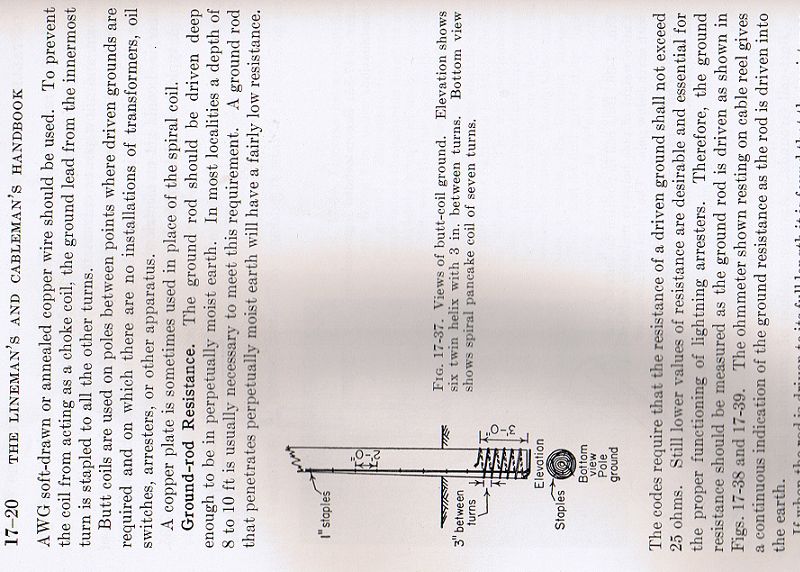- Location
- Windsor, CO NEC: 2017
- Occupation
- Service Manager
I recently prepped some pole bases for a parking lot. I had less to do with this than I normally do, the GC apparently is taking care of most of the work. All I had to do was get my conduit in position, and tie a grounding conductor from the rebar cage they built and group it with the RNCs.
As I was proceeding, a fellow apprentice came out, saw my progress and asked me where the coil of wire was at the bottom. I replied that I wasn't asked to do so, the foreman simply wanted to use the cage as an electrode.
My coworker thought the coil of wire was code.
Every pole base he'd ever seen had a bare conductor coiled in the bottom, and attached to a cage (if present) and brought into the pole. Sort of a CEE, only in contact with earth on the bottom, concrete poured onto it.
I pulled up next to a fellow employee at a long stoplight, and asked him about it. He thought it was code too, from a different source.
Interestingly to me, the size of the wire varied, as the story goes. Some used #4, some used #6, some used even as small as #8.
Any ideas as to the source of this practice? If I remember a half-remembered discussion on CEE's in the past correctly, then the CEE came into the NEC around 1970 and the specifications never appreciably changed. My code knowledge starts in the 2002, which does me no good.
At one point in the discussion I thought that perhaps a trainer of today's foremen in the company started the "tradition", but one guy said he'd seen it in other companies as well. So, I figured there might have been a historical source for it?
Also, what is your Standard Operating Procedure?
All replies appreciated as always.
As I was proceeding, a fellow apprentice came out, saw my progress and asked me where the coil of wire was at the bottom. I replied that I wasn't asked to do so, the foreman simply wanted to use the cage as an electrode.
My coworker thought the coil of wire was code.
Every pole base he'd ever seen had a bare conductor coiled in the bottom, and attached to a cage (if present) and brought into the pole. Sort of a CEE, only in contact with earth on the bottom, concrete poured onto it.
I pulled up next to a fellow employee at a long stoplight, and asked him about it. He thought it was code too, from a different source.
Interestingly to me, the size of the wire varied, as the story goes. Some used #4, some used #6, some used even as small as #8.
Any ideas as to the source of this practice? If I remember a half-remembered discussion on CEE's in the past correctly, then the CEE came into the NEC around 1970 and the specifications never appreciably changed. My code knowledge starts in the 2002, which does me no good.
At one point in the discussion I thought that perhaps a trainer of today's foremen in the company started the "tradition", but one guy said he'd seen it in other companies as well. So, I figured there might have been a historical source for it?
Also, what is your Standard Operating Procedure?
All replies appreciated as always.



